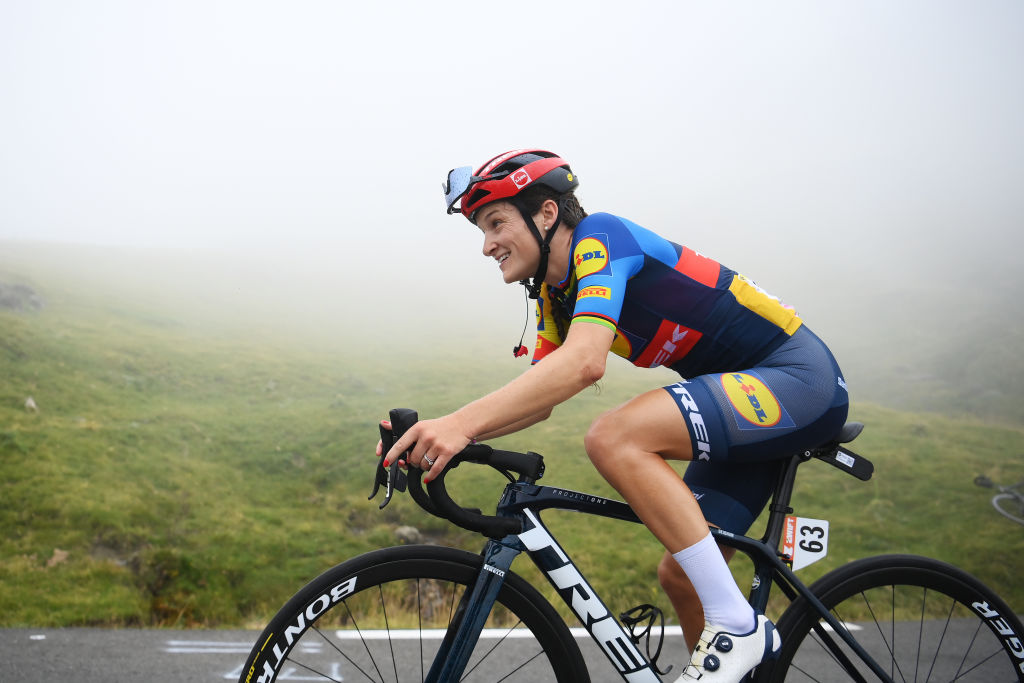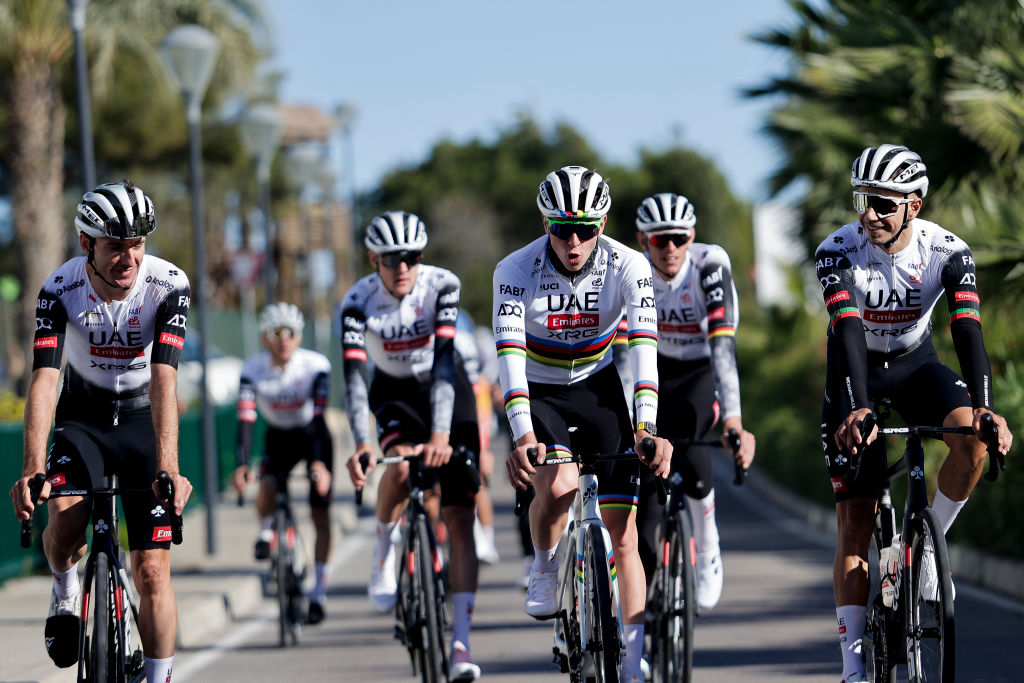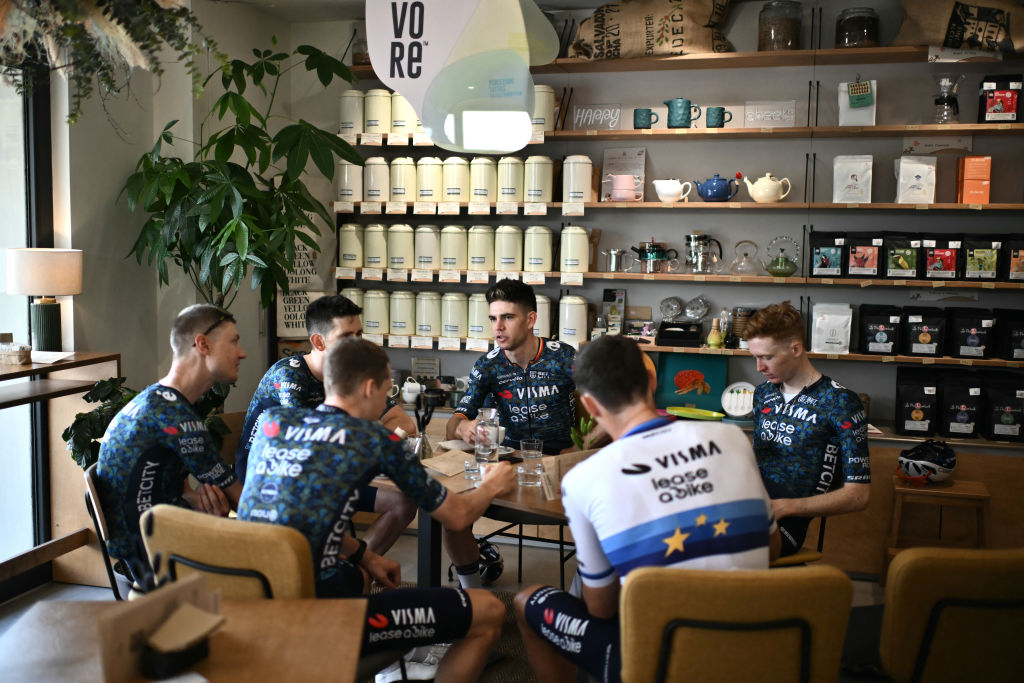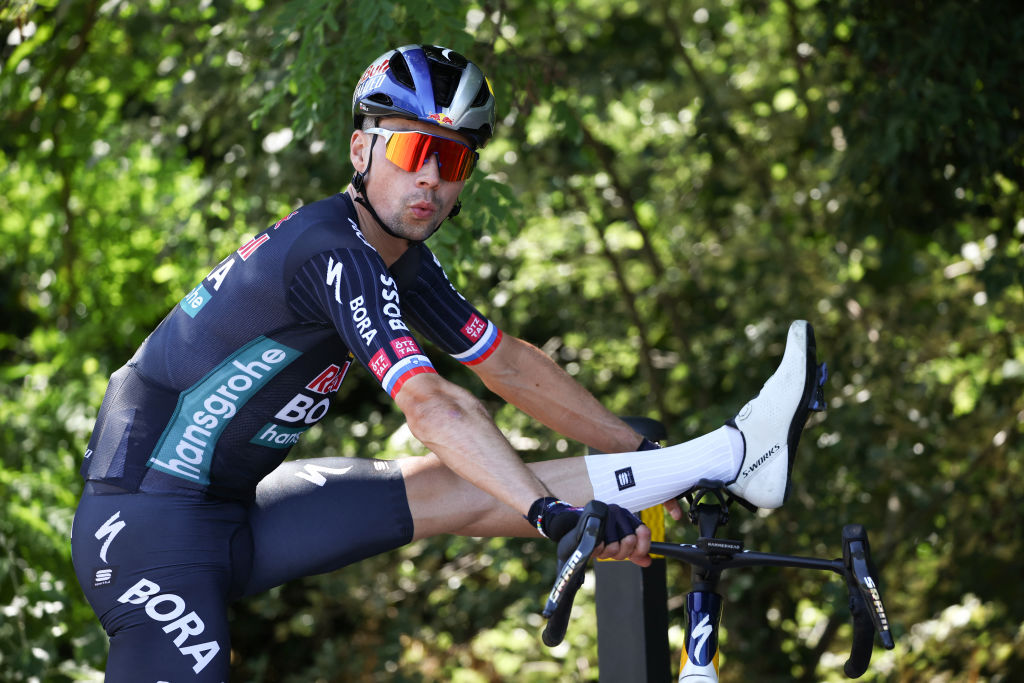What does a pro cyclist’s training plan look like?
We look at how off-season marathons, 28-hour weeks and keeping calm all form the new picture of WorldTour training plan - and include a sample training plan

Becoming a pro cyclist is an elusive dream for many, and while Tadej Pogačar and Demi Vollering might make it look easy, it is a real science.
WorldTour team coaches meticulously carve out training plans for the best riders in the world, with the goal of helping them reach the ultimate success. They have a huge responsibility to ensure that each rider is given the tools to perform to their highest possible standard, so how do they do it?
Formation
A training plan is organised into blocks and arranged around off-season, pre-season and competition season, with varying approaches of construction depending on coaches and athletes.
"Pre-season is the most important period of the season in my opinion," said Aritz Arberas Pampin, coach at Lidl-Trek.
"This pre-season period is where we put a lot of training load and we invest a lot of hours trying to improve and implement new strategies, like biomechanics, bike fitting and aero testing. Most of the teams have one or two training camps in December and January for this.
"It’s where we build and raise the condition of the riders as much as we can, because once you go into the racing period, depending on the calibre of the riders, sometimes they don't have time to train because they need to recover from one race to another. In this case, the races are training the riders."
How blocks are set out depends on the rider, the period of the season and the objectives ahead.
Get The Leadout Newsletter
The latest race content, interviews, features, reviews and expert buying guides, direct to your inbox!
"You can find a lot of different approaches like three weeks full training in progression, one week where you go to 75% of the load you are doing in the other three weeks," said Aritz.
Typically, training ranges from three and a half hours to five and a half each day.
"If we have a young World Tour rider, I might advise 22 to 25 hours a week. Riders preparing for Grand Tours might do 28 to 31 hours per week," said Aritz.
There is a limit, too.
"Everything over 31 hours with efforts is too much, especially if you do them constantly," said Aritz.
"Maybe one week you do 34 hours, but the next two weeks will be 22 or 25 hours so that balances it out. If you regularly do 31 to 34 hours of training in my experience that doesn't give that much benefit for the time you spend on the bike."
Role dependent

Each rider’s training plan depends on their role within the team, with training varying between sprinter, climber, domestique and GC rider.
"A GC rider’s plan is based around key objectives, usually one to three," said Aritz.
"If we are preparing for the Tour de France, we would start from a recovery phase, followed by altitude training for three weeks, then a few days at home to get a bit of freshness, and then race Dauphiné with full focus. We would then do a reminder of altitude and specific efforts for two weeks and then race the Tour.
"On the other hand, if the rider is a domestique, we need to consider if the rider needs to be ready for most of the season, for any changes that can happen during the race calendar, like injuries or teammates not performing at the level expected.
"These riders need able to jump into a race when needed, so it's key for them to be always in an acceptable fitness level, which is around 80% of their best condition."
For the sprinters, it’s another approach altogether.
"Sprinters need specific work on sprinting and being able to put in a good sprint at the end of the stage," said Aritz.
"Mostly what they do is get ready to develop their best sprint at the end of the stage. They do this by repeating a sprint, or creating training situations where they arrive fatigued to the sprint and then perform a good sprint.
"For example, you could train them by doing short climbs, so a climb of two or three minutes a bit above threshold and then a sprint, or by repeating three sprints in one minute, for example. It's a way of training this fatigued sprint.
"Sprinters also need to manage their weight in a proper way, and not lose weight too much, because they could lose their kick, and they need to invest in strength training."
Off-season

Riders tend to finish racing in late autumn and take a holiday, but it’s short-lived.
"When they finish the season in around October, the recommendation is to have 2-4 weeks without a bike but staying active doing other activities like walking and swimming," said Aritz.
"Then we start on the pre-season period until the first competition in February."
We’ve seen riders smashing out half marathons and fast 5km runs during the off-season, but what’s the impact of this?
"This is something very nice that has changed the last years," said Aritz.
"Before riders would only use the bike but nowadays riders do other sports and as their base condition is so high, they can be very competitive.
"The best thing for me about this is that while cycling is a non-impact sport, running provides stimulus to help combat low bone density."
Training off the bike
While spending a lot of time in the saddle is key, some riders also hit the gym, with Silvia Persico referring to her strength training as helping her sprinting at the UAE Tour, but is everyone doing it?
"This is a big topic in cycling teams because there's a lot of controversy," said Aritz.
"There's been some scientific research saying that strength training in the gym helps, while other papers say it doesn’t. You see some riders having really good performances and results without going to the gym or doing cross-training.
"From my point of view as a coach, I always try to recommend doing a bit, not only because of the benefits that it can have on performance, but because I think it's healthier to do a bit of weightlifting. In a week of 28 hours, I would suggest 2-3 hours in the gym."
Mental preparation is also important. In 2022 Elisabetta Borgia joined Lidl-Trek as the first-ever WorldTour team sports psychologist.

"It's coming into training more and more but generally it's something that the riders do privately," said Aritz.
"You have riders that don't need any kind of mental coaching, while others might speak to their coach about it. There's another level of riders where they use a mental coach to help organise their mind or learn strategies to manage the different needs they have."
Sleep is also a crucial element, with Aritz advising between seven and eight hours a night.
"When I see a rider is sleeping less, I always ask do you think it's enough? Some riders are fine with six hours and for me, this is incredible because I love sleeping.
"Sleeping is super important, but it’s how you spend the rest of the day after training, when you are off the bike, which needs to be relaxed. Trying to have a calm life gives a lot of benefits in regards to recovery."
For women, it is also important to consider their menstrual cycle around their training plan.
"You need to consider it in the whole programme for a rider, with the race calendar and training phases," said Aritz.
"Every single athlete is different, so every athlete needs to adapt to its individualities, and in the case of women, it's the same. Some of them feel more of impact from their cycle, others feel less, it’s very individual."
Spend a week training like a pro cyclist
Evidently, a pro cyclist’s training plan is full-on, with a lot of pedalling and not a huge amount of relaxing.
Here’s an example from Aritz on the average week of training for a WorldTour cyclist.
| Monday | Tuesday | Wednesday | Thursday | Friday | Saturday | Sunday | Total |
|---|---|---|---|---|---|---|---|
| 4 hours with short efforts | 5 hours with HIIT | 1.5 hours of active recovery | 5 hours with HIIT | 6 hours at tempo | 7 hours endurance | 1.5 hours active recovery | 30 hours |
| Efforts shorter than 2 mins | Vo2 Max | Row 1 - Cell 2 | Vo2 Max | Below threshold training | Aerobic capacity work | Row 1 - Cell 6 | Row 1 - Cell 7 |
Emma Cole is a gold-standard NCTJ journalist who loves anything to do with adventure, sport and sustainability. Alongside writing about these passions for Cyclingnews, her work has also featured in Cycling Weekly, Outdoors Magic and Cyclist Magazine - where she previously held the role of Features Writer for over two years. Emma hosts her own podcast, The Passion Stories Podcast and has a first-class degree in French and Politics.
You must confirm your public display name before commenting
Please logout and then login again, you will then be prompted to enter your display name.